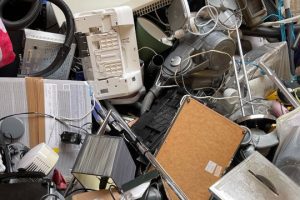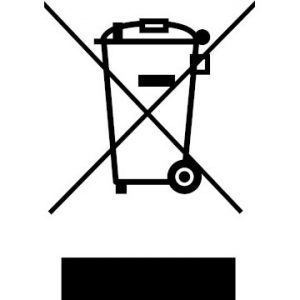Waste Electrical and Electronic Equipment (WEEE) – What You Need to Know

Photo by John Cameron on Unsplash
What is waste electrical and electronic equipment?
Waste electrical and electronic equipment (WEEE) is subject to special restrictions in the UK and the EU. In terms of volume, white goods (e.g washing machines, fridges) account for a significant proportion of WEEE. But there is a vast range of products covered by the regulation. Computers, televisions, electrical tools and electronic toys are all included.
In the UK alone, an estimated two million tonnes of WEEE are discarded each year. Regulation covering the disposal of WEEE has developed over the past two decades. If you are a business that operates in European markets, you must be aware of WEEE regulation.
What is the purpose of WEEE regulation?
The central aim of the regulation is to reduce the amount of waste that is sent to landfill. It forms part of broader efforts to improve sustainability and combat environmental problems. WEEE regulation focuses on reuse and recovery. This means electrical and electronic components from discarded devices and appliances are less likely to become waste. Under the regulation, producers must play a role in managing waste.
How is WEEE implemented and enforced?
Regulation of waste electrical and electronic equipment originated as an EU directive. Like all directives, implementation lies with national governments. As a result, the regulation varies somewhat between different countries. While most operate in roughly the same way, you should be aware that there will be some differences.
What do I need to do to comply with WEEE regulation?
WEEE regulation applies to almost all electrical and electronic equipment. Products are divided into categories (large household appliances, consumer equipment, etc.). The regulation applies to both battery-powered and mains-powered products.
Under the regulation, producers and distributors must facilitate the disposal of products they supply. The scope of their obligations vary. In both cases, they must ensure they keep accurate records of WEEE products. And all products covered by the regulation must feature the WEEE symbol (a crossed-out wheelie bin).
Producers will typically join a producer collection scheme. Collection schemes manage the collection and recovery of WEEE material on their behalf. Additionally, producers must allow the return of WEEE to retail stores. In most cases, this applies only when purchasing an equivalent, new product.

Where can I find more information about compliance?
While implementation varies between countries, the European Union website provides a general overview. The UK government and the German government websites also have useful information. For specific advice about WEEE regulation compliance, you should contact an expert.

